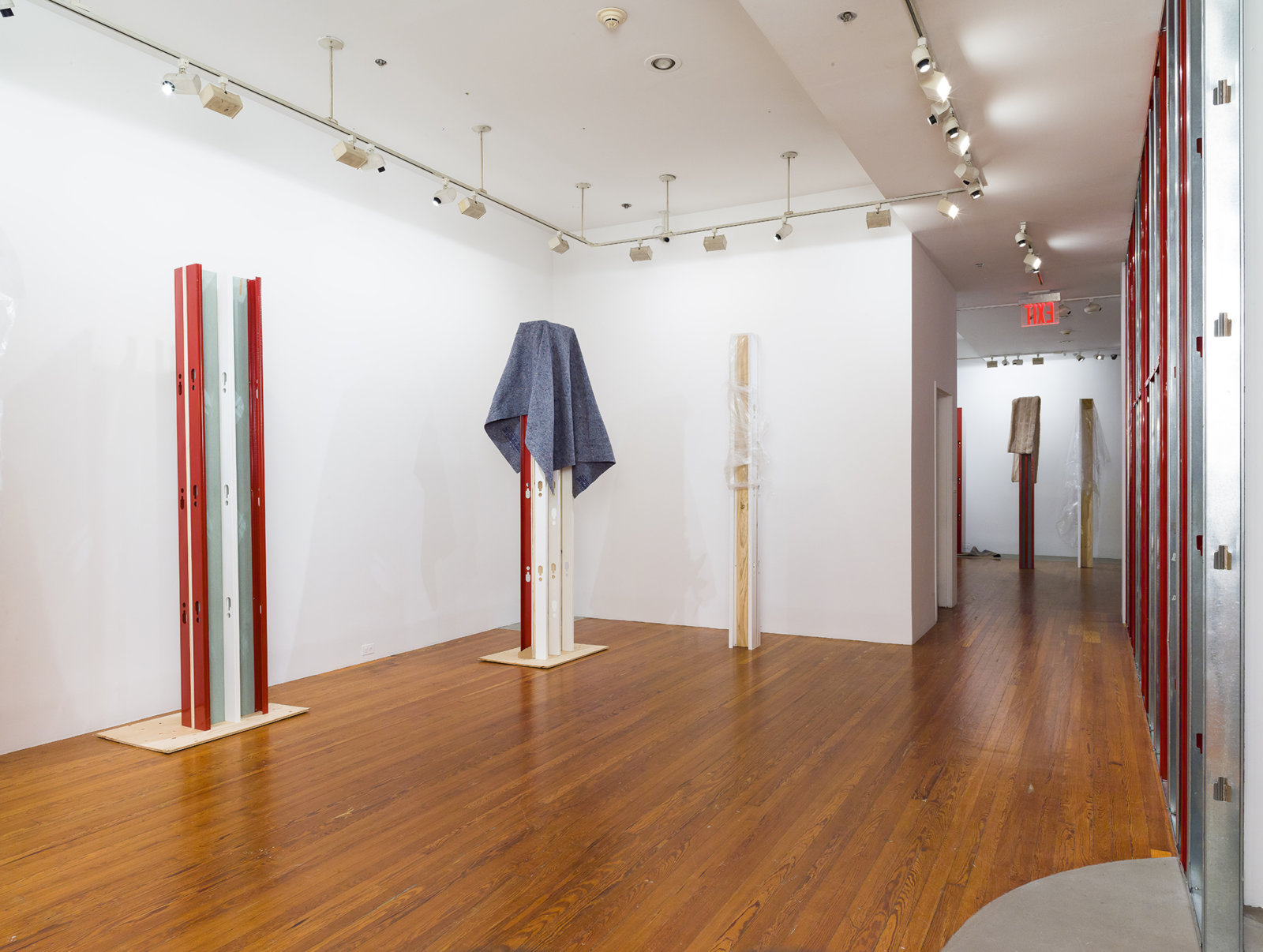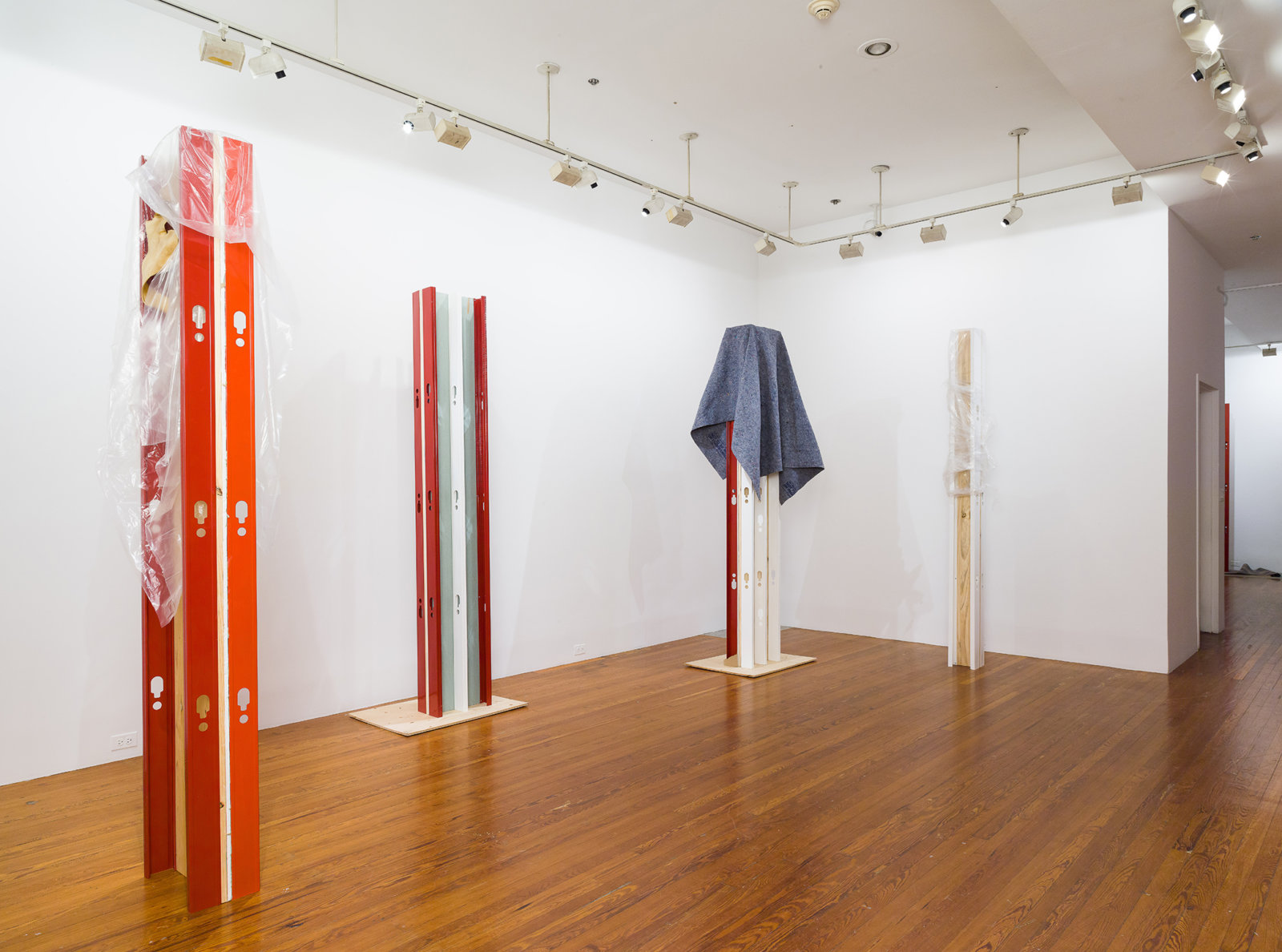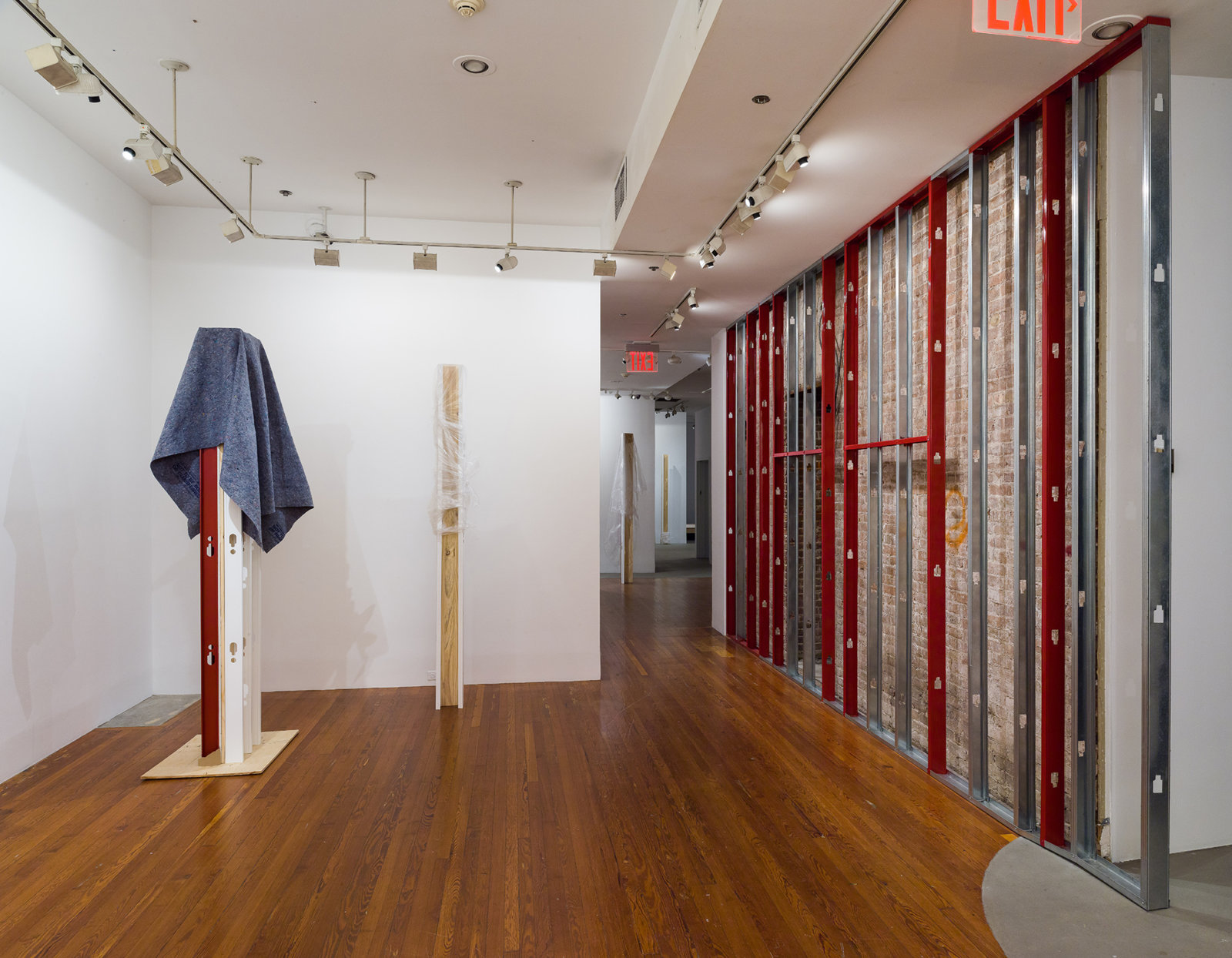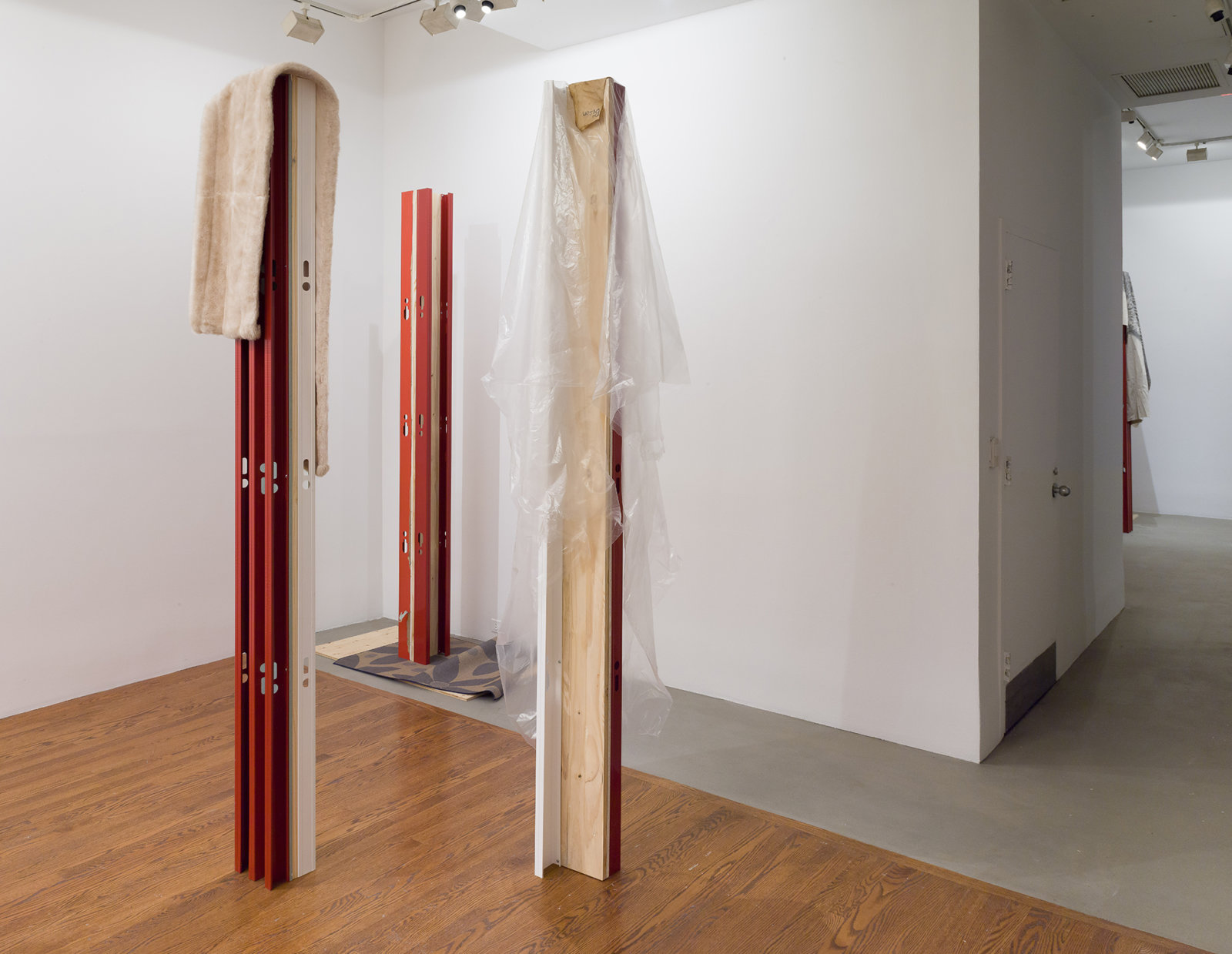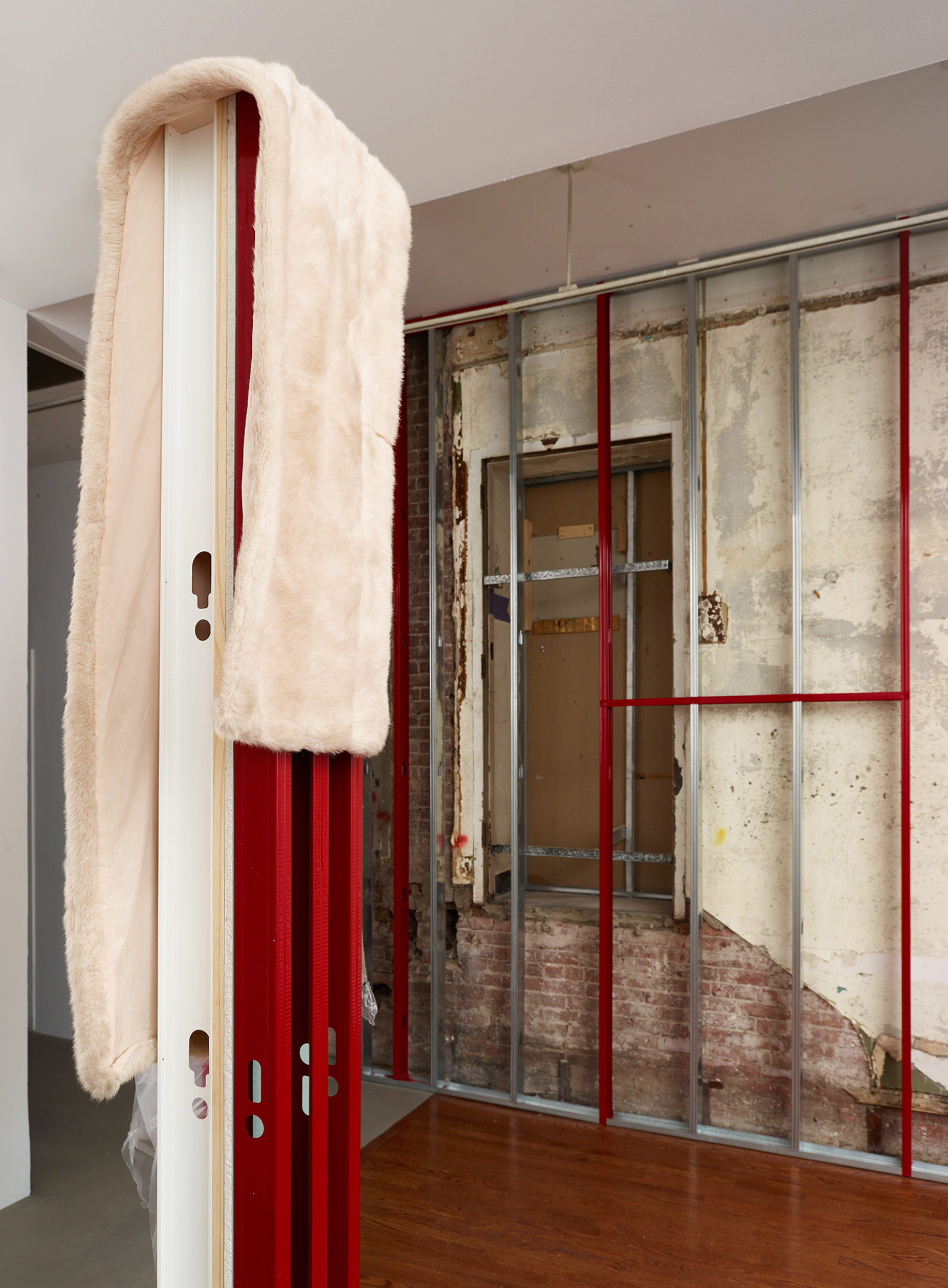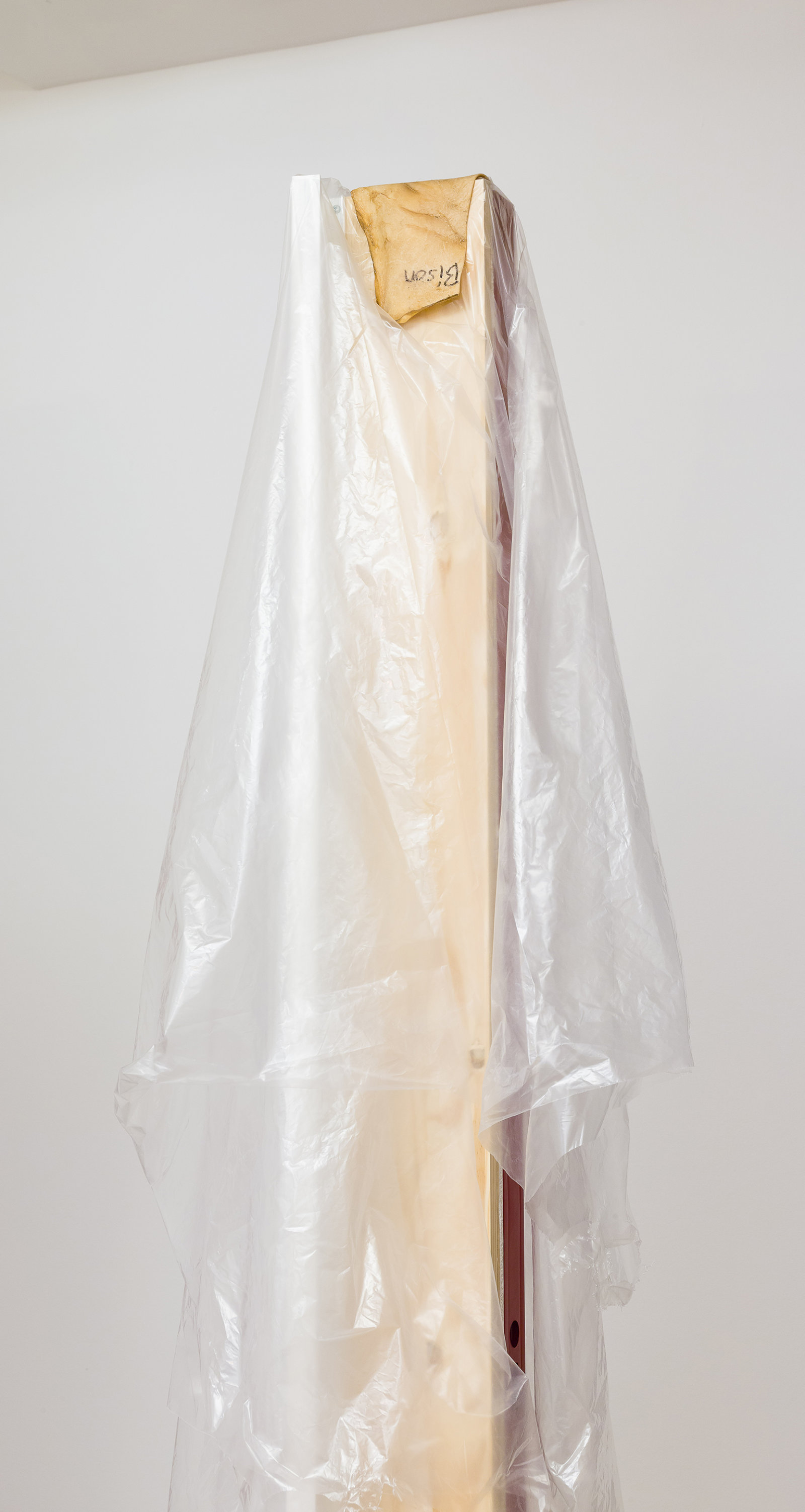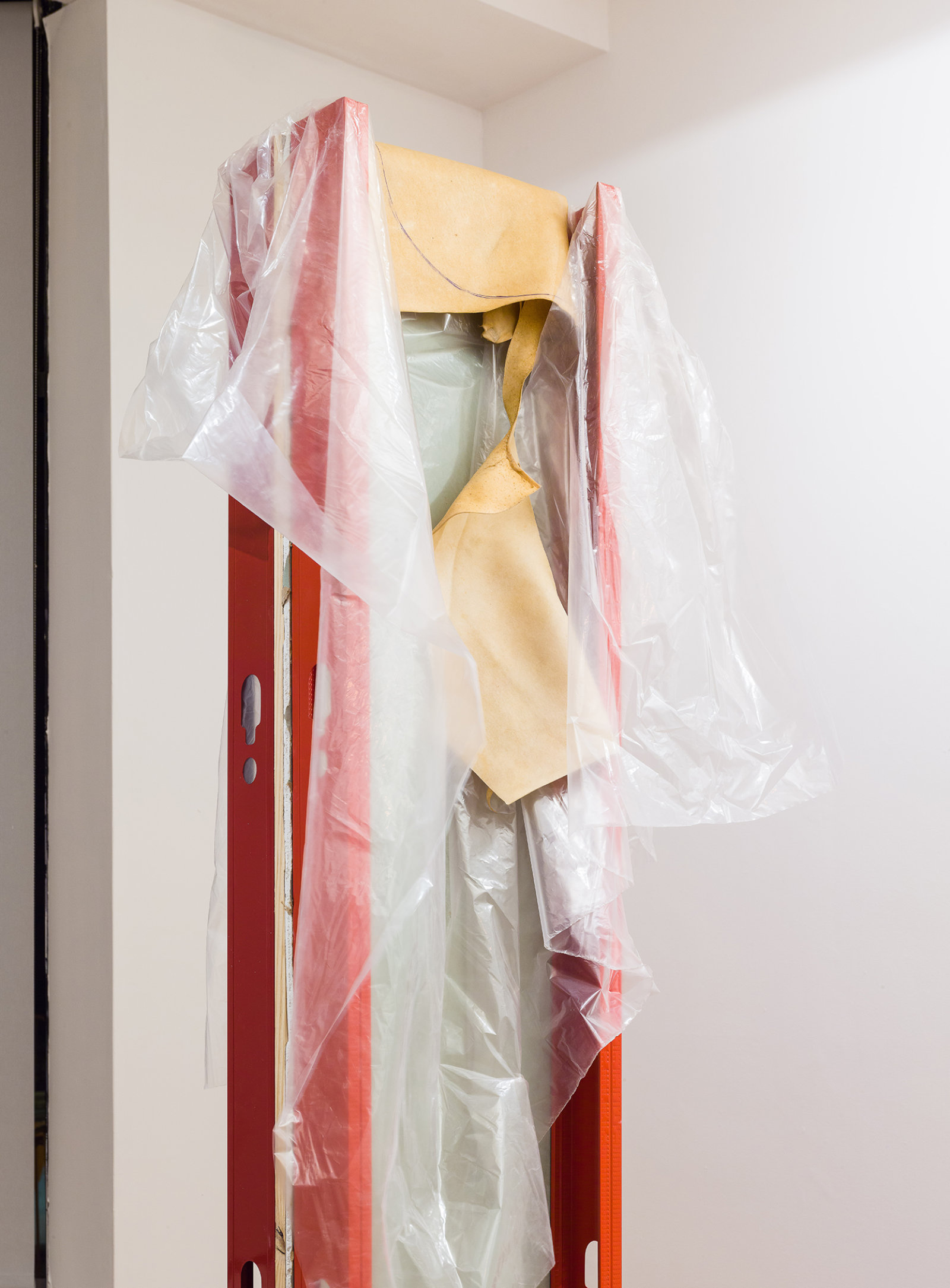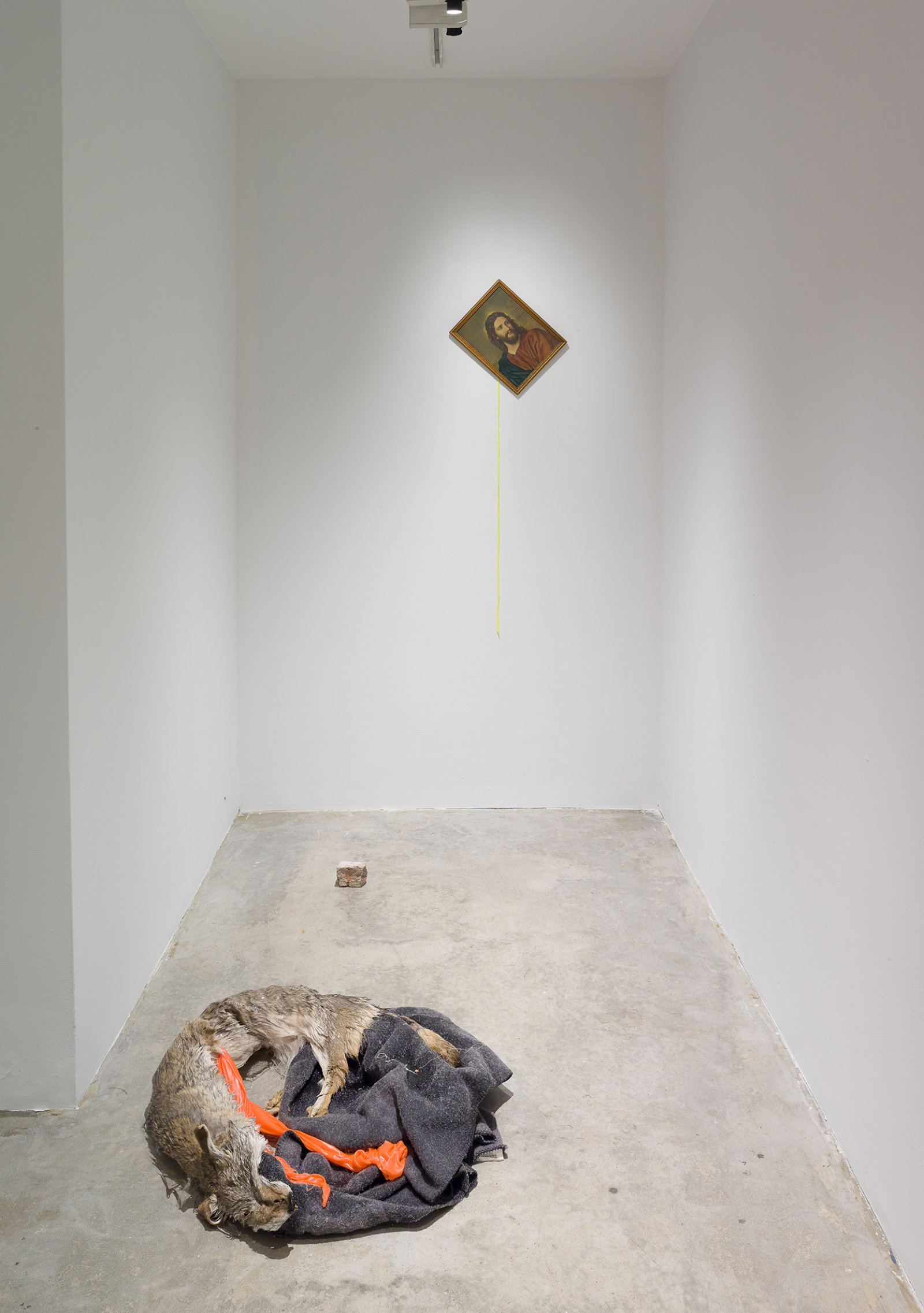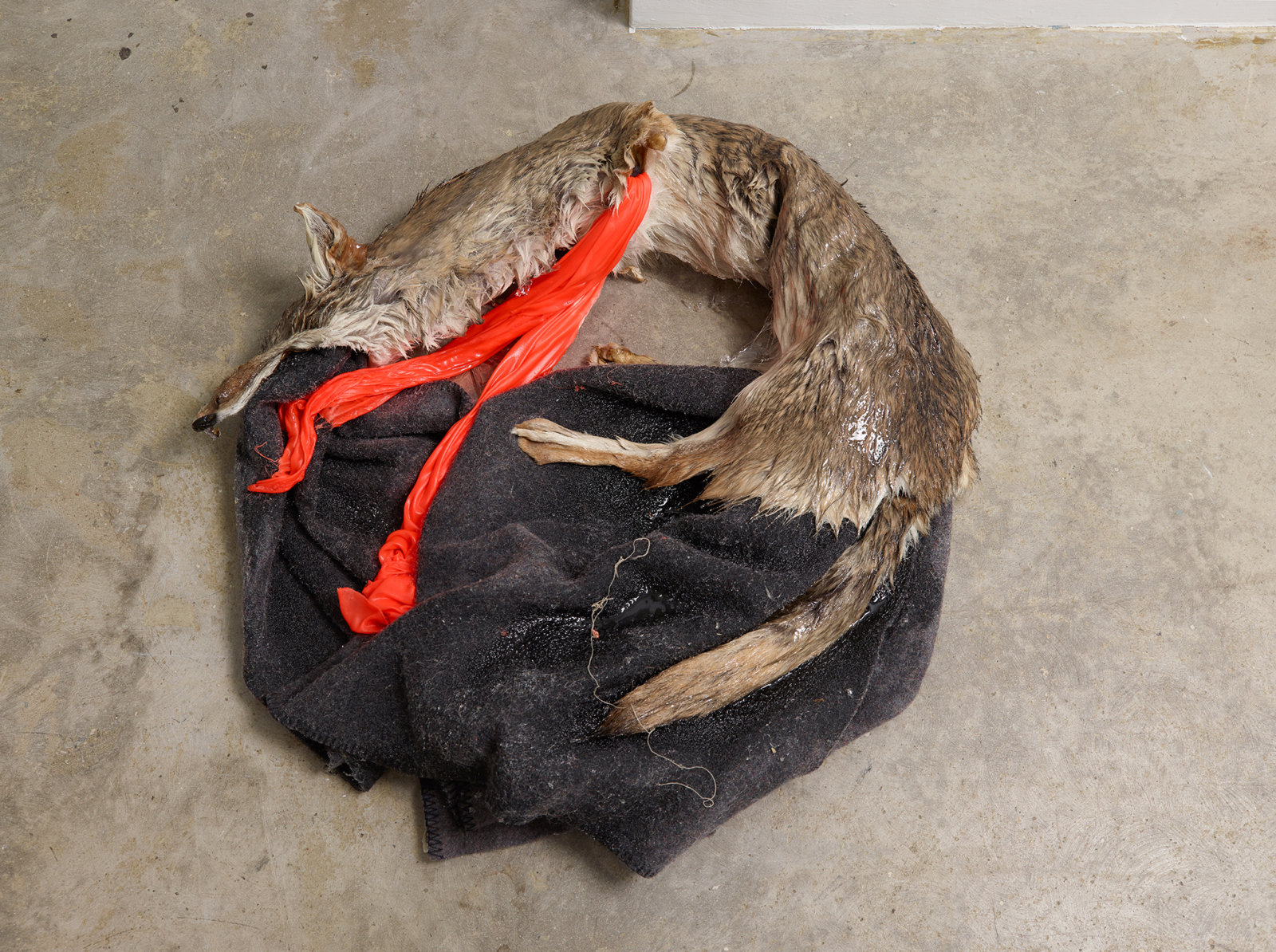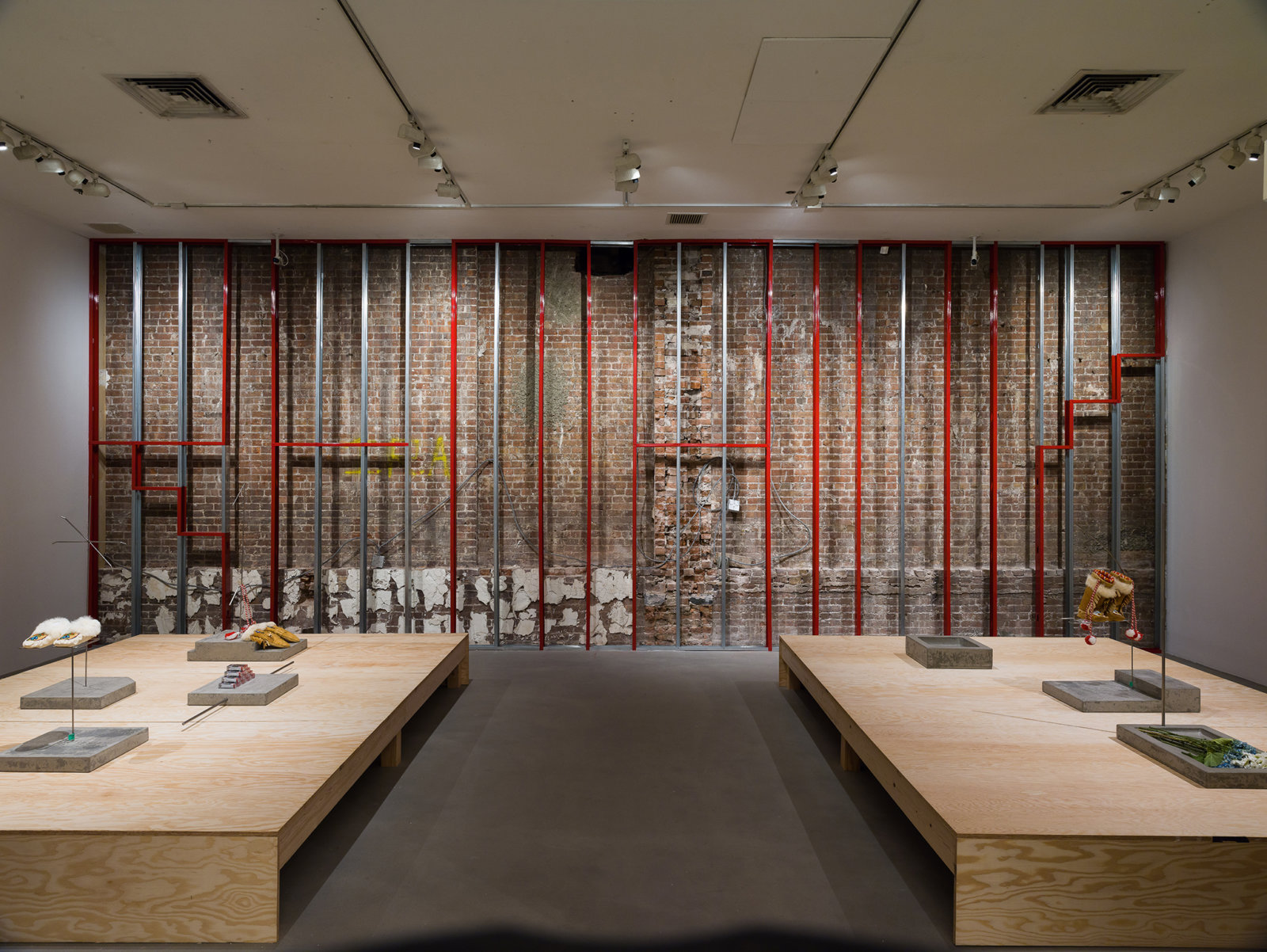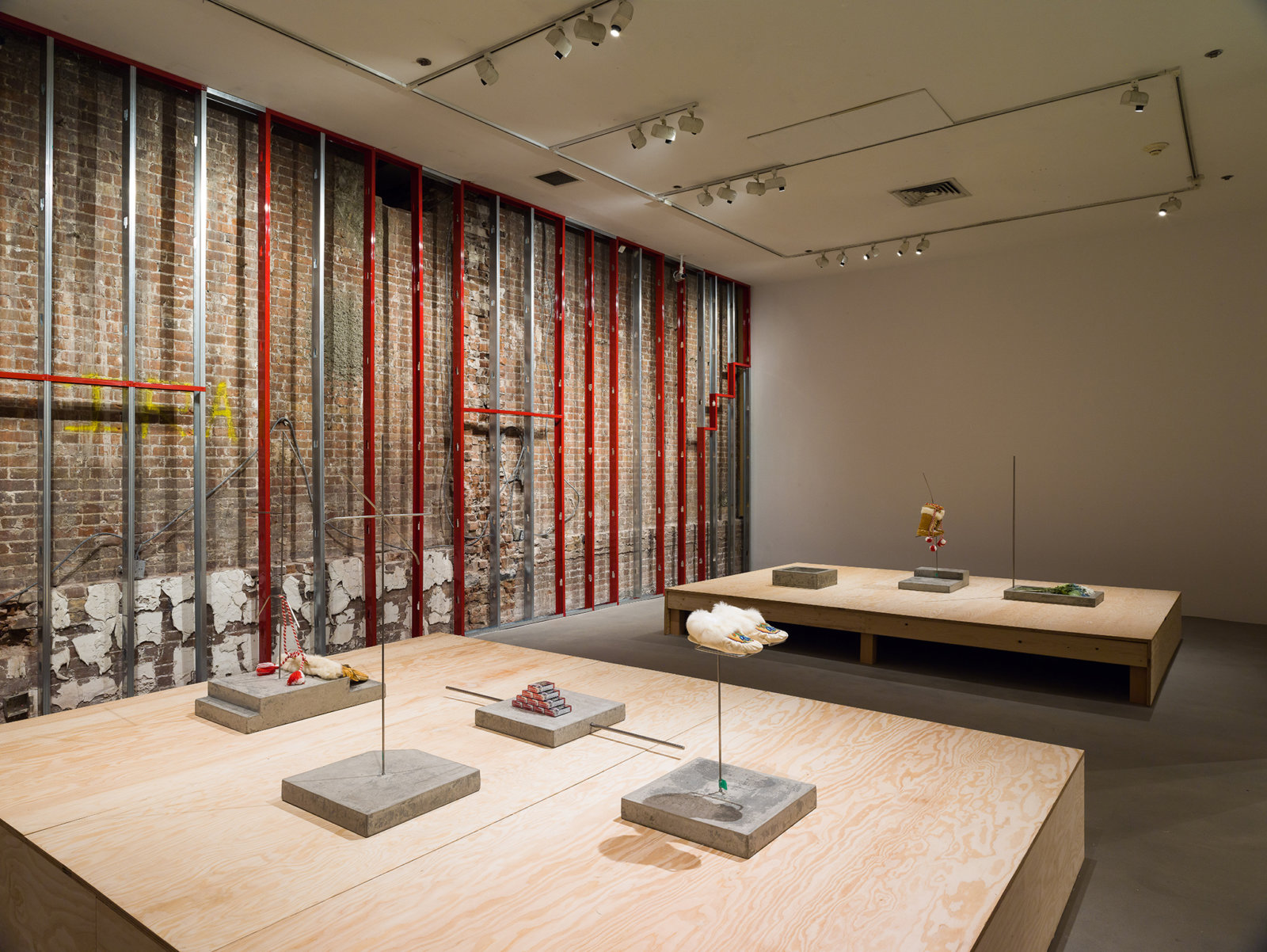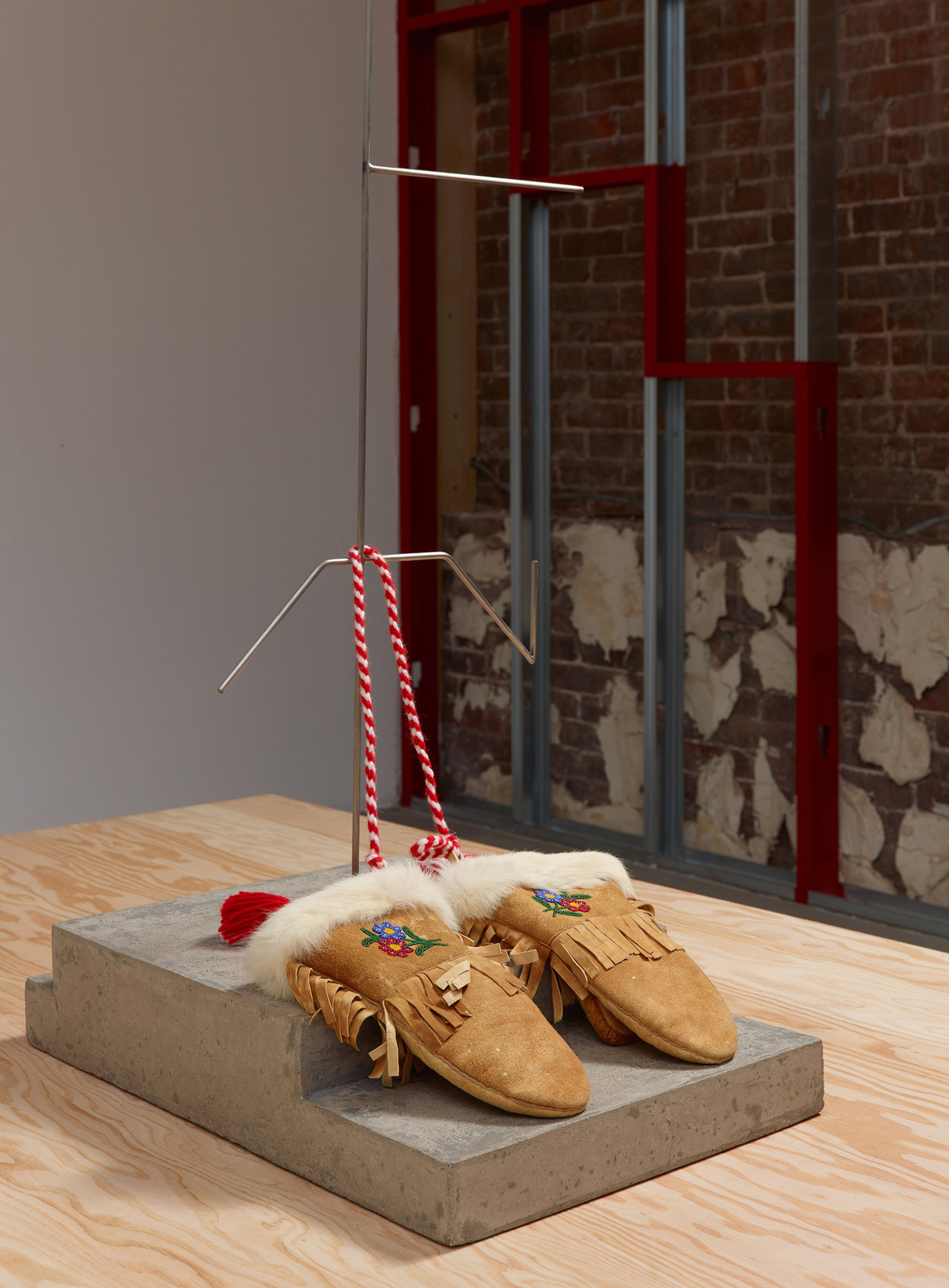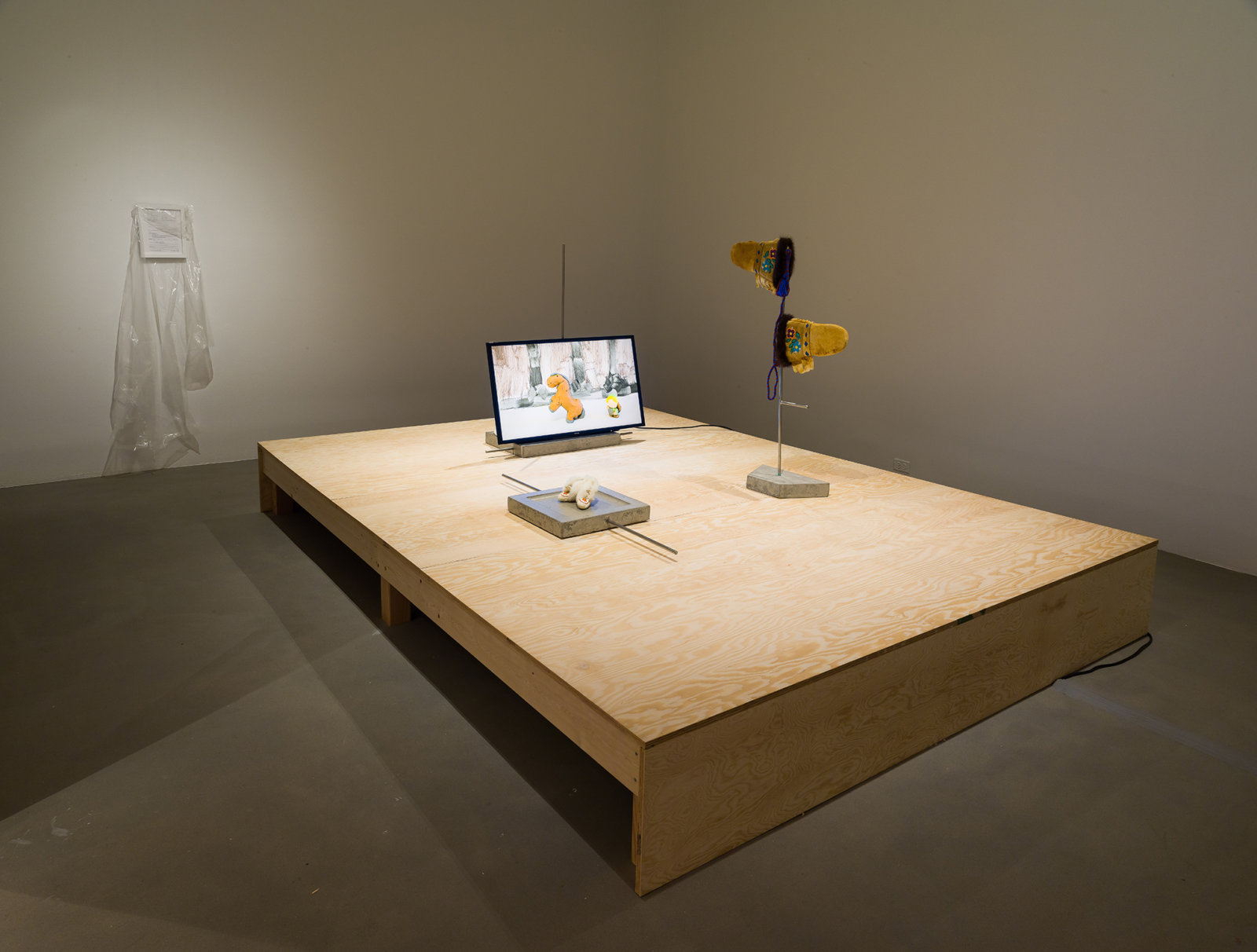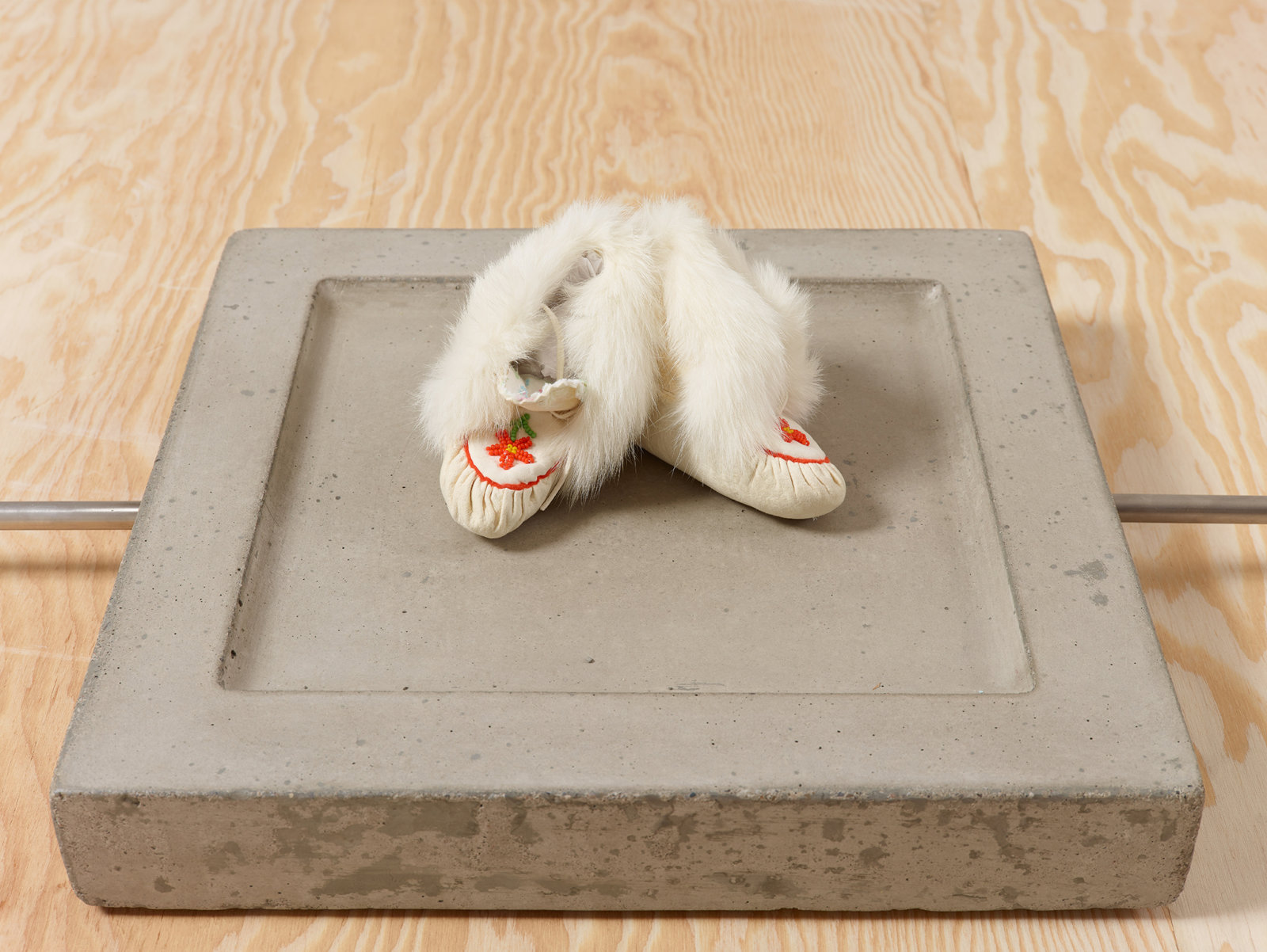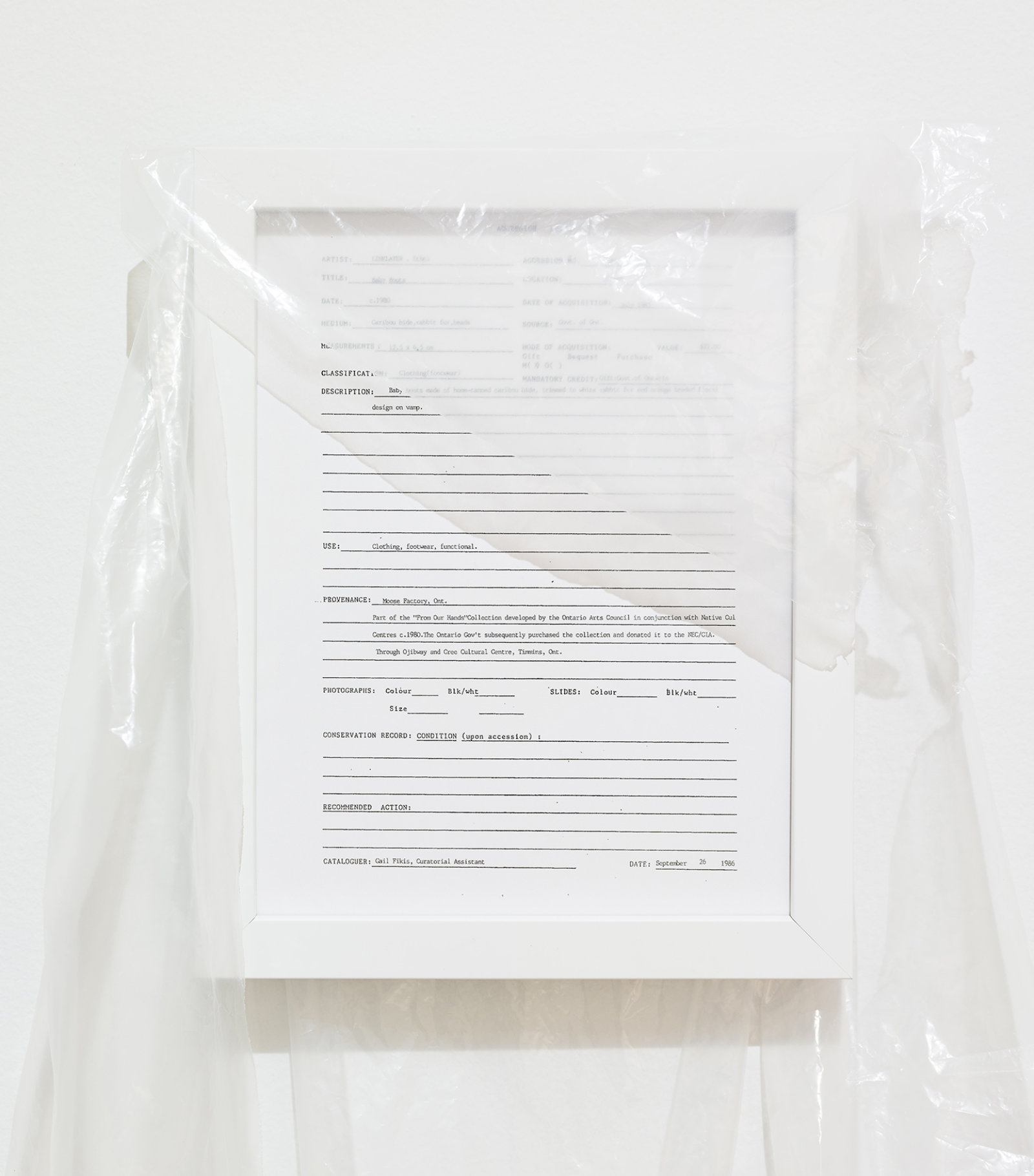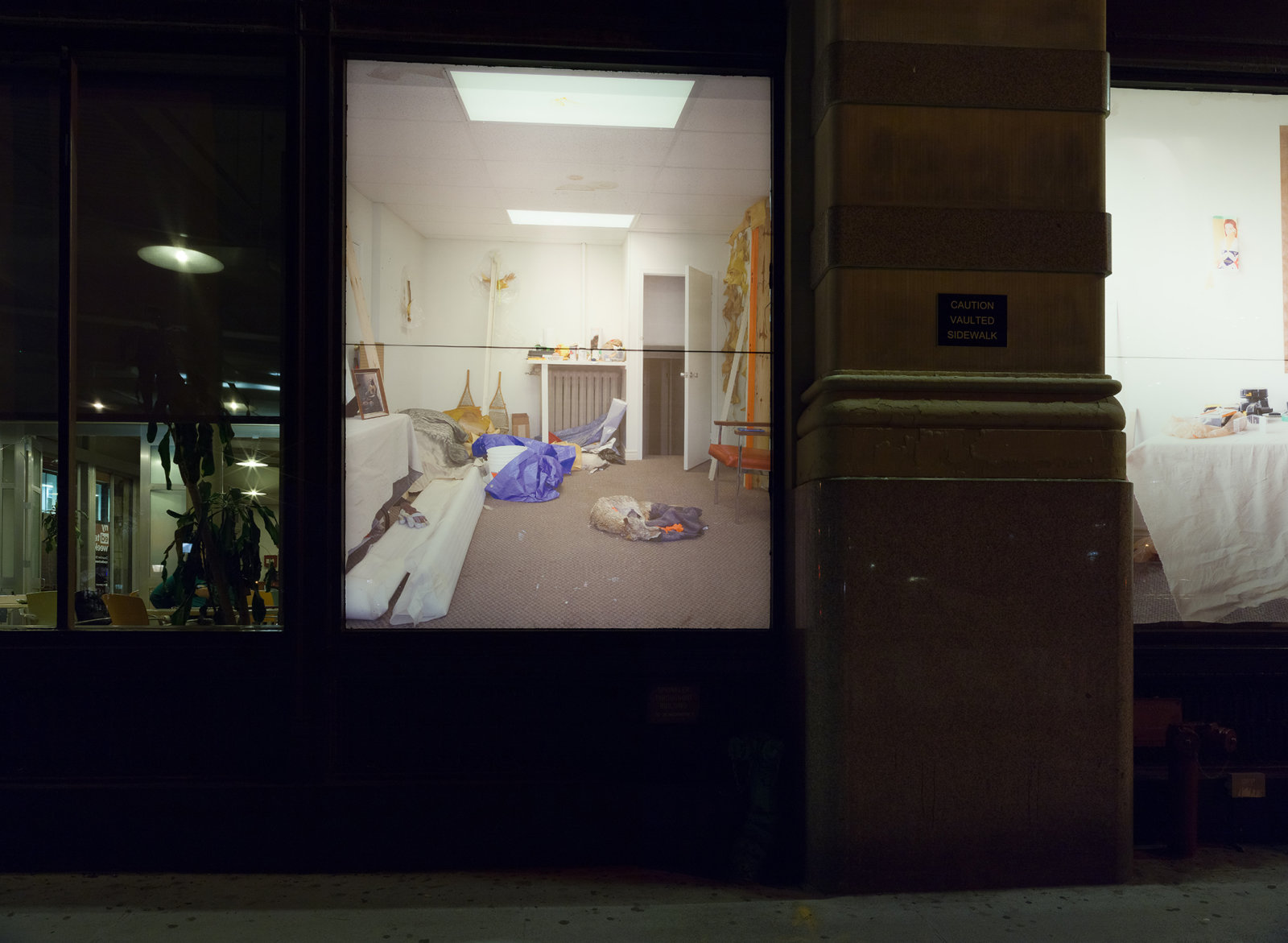Duane Linklater – From Our Hands, DECEMBER 8, 2016–FEBRUARY 18, 2017
Duane Linklater
From Our Hands
December 8, 2016–February 18, 2017
80WSE Gallery, NYU Steinhardt School, New York, USA
80 Washington Square East Galleries is pleased to present From Our Hands, an exhibition of Duane Linklater (b. 1976, Omaskêko Cree from Moose Cree First Nation in Northern Ontario), in collaboration with Mercer Union, Toronto. This exhibition features a series of new works including a large-scale architectural intervention that runs through all five galleries. This structural response explores the internal language of walls, the spaces for the Indigenous body, and how spaces of inclusion can be extended. The introduction of works by Duane’s late paternal grandmother Ethel Linklater and his twelve-year old son Tobias unearths his familial framework, the migration and exchange of knowledge and ideas, and their consequences.
The title From Our Hands refers to an exhibition which toured Ontario between 1982 and 1985 presenting Indigenous craft, including the work of Ethel Linklater, which will be re-presented within the galleries and displayed on museum-style steel and concrete armatures. The placement of these objects in the installation instigates questions around the exclusion of craft and the handmade from fine art discourses. Moreover, it reflects on concepts of lineage, Indigenous history and cultural property. The process of the loan, shipping and customs negotiation for Ethel’s objects—caribou-hide and rabbit-fur mitts, slippers, mukluks and baby boots—from the Thunder Bay Art Gallery at Duane’s request mobilizes present day relations of cultural heritage while highlighting traces of genealogy and questions of legacy.
Ubiquitous materials of construction, gypsum, plywood and steel mined and extracted from the land are repurposed in a series of 8 foot high sculptures, their span mimicking that of Duane’s chest and height with extended arms. This act recalls the opening lines in Audra Simpson’s Mohawk Interruptus: Political Life Across the Border of Settler States when she describes the role of ironworkers from Kahnawà:ke who built the infrastructure for skyscrapers, bridges, and other large scale jobs in cities across the Northeastern United States traveling on Sunday nights to start work on Monday mornings. This series of sculptures, Untitled Problems, are draped with discarded elk and bison hides, offcuts from a native crafts store, plastic and a faux fur scarf, and are presented in clusters in the front three galleries as a form of occupation.
The large-scale architectural intervention in the galleries has removed and replaced the gallery walls, and introduces a sentence questioning Indigenous sovereignty of land, law, and legacy. During the installation the drywall, plywood and steel studs along the length of three gallery walls have been removed. The structure of the gallery has been physically altered and extended. This has been replaced with new steel studs, in a skeletal form, powder coated in a fire engine red at specific intervals to form for the words, ‘WHAT THEN REMAINS’ with each word occupying one full wall. This text ‘WHAT THEN REMAINS’ is an excerpt from a 2015 statement by Justice Sonia Sotomayor in the closing remarks of the United States Supreme Court case Dollar General v Mississippi Band of Choctaw Indians. When a thirteen year-old tribal member on the training program alleged abuse by a non-Indian employee on the company’s store on tribal land. At the core of the case was the legal principal that tribal courts have civil jurisdiction over non-Indian conduct arising from consensual relations on Indian reservations, weaving through overriding sovereignties across territories and bodies, and, critically, Indigenous sovereignty. The walls of 80WSE Gallery have not been opened since its construction in 1974 and following the close of the exhibition the new powder coated steel studs will be plastered over to reinstate the gallery walls, becoming a permanent yet unseen presence in the gallery. Their residue will remain.
Within Washington Square, images of Duane Linklater’s studio in North Bay, Ontario, will be installed and illuminated in the gallery’s Washington Square Windows. NYU’s 80WSE Gallery in Washington Square is part of the Steinhardt Art School. The gallery is a space for dialogue, experimental and cross-disciplinary projects by noted artists and curators, often produced in collaboration with faculty and students. During 2017 80WSE will be providing space for student groups to be in residence, organize informal events as well as their ongoing activities such as the NYU Native Film Festival. Duane Linklater, Tanya Linklater and cheyanne turions are the current members of the Wood Land School—an artist-led initiative addressing the lack of visibility and critical writing on the works of contemporary Indigenous artists. This exhibition also coincides with the launch of the first Wood Land School critical anthology.
This exhibition originated at Mercer Union, a centre for contemporary art, Toronto with support from Partners In Art. The presentation at 80WSE Gallery is curated by Georgina Jackson (Director of Exhibitions & Programs, Mercer Union) and Nicola Lees (Director and Curator, 80WSE Gallery) with curatorial assistant Georgia Harrell.
Selected Biography: Duane Linklater is Omaskêko Cree from Moose Cree First Nation in Northern Ontario. Born in 1976, he holds bachelor's degrees in fine art and Native studies from the University of Alberta (2005) and a master's degree in film and video from the Milton Avery Graduate School of Arts at Bard College (2012). His collaborative film project with Brian Jungen, Modest Livelihood, was originally presented at the Walter Phillips Gallery at The Banff Centre in collaboration with dOCUMENTA (13) with subsequent exhibitions of this work at the Logan Centre Gallery at the University of Chicago, Catriona Jeffries Gallery in Vancouver and at the Art Gallery of Ontario. Recent exhibitions include a two-person exhibition Parallel Excavations (w/Tanya Lukin Linklater) at the Art Gallery of Alberta, Edmonton, Alberta and his participation in the SeMa Biennale 2016 in Seoul Korea. Solo exhibitions include; From Our Hands, Mercer Union, a centre for contemporary art, Toronto (2016); Salt 11: Duane Linklater, Utah Museum of Fine Arts, Salt Lake City (2015); ICA@50: It means it’s raining, ICA, Philadelphia (2014); Decommission, Maclaren Art Centre, Barrie, Ontario; Learning, Susan Hobbs Gallery, Toronto; Something about encounter, Thunder Bay Art Gallery, Ontario; Grain(s), in collaboration with Tanya Lukin Linklater, Images Festival co-presentation with Museum of Contemporary Canadian Art, Toronto; and Secondary Explanation, The New Gallery, Calgary (all 2013). Linklater was awarded the Sobey Art Award in 2013. Duane is represented by Catriona Jeffries, Vancouver. He lives with his family in North Bay, Ontario.
Ethel Linklater was born November 24, 1932 near the community La Sarre Quebec. She was raised by her parents in the area who then relocated to Moose Factory, Ontario. A fluent Cree language speaker, she was taught to make objects at an early age by her mother, matriarch of the Trapper family, Emily Trapper. Ethel developed her practice over her entire lifetime and the high quality of her work was well known and sought after throughout the James Bay region. Ethel Linklater passed away July 7, 2004, leaving a strong cultural legacy behind for her many children, grandchildren and great grandchildren.
Tobias Linklater (b. 2004) is a member of Moose Cree First Nation (Ontario, Canada) and the Native Villages of Afognak and Port Lions (Alaska, USA). Tobias is Omaskêko Cree and Alutiiq and resides in North Bay, Ontario. Origin of the Hero (2016) is his first video for exhibition and was developed at Near North Mobile Media Lab’s Animation Creation Camp in August 2016.
The Wood Land School was established in 2011, originating in Duane Linklater’s North Bay studio current members also include Tanya Linklater and cheyanne turions. It is an ongoing project with no fixed location or form. It seeks critical engagement within the realms of representation, film, contemporary art, land and politics in Turtle Island and beyond. Each iteration of Wood Land School carries forth with it a commitment to address the lack of structural inclusion, both historically and in the now in a multiplicity of institutional spaces. It is a conceptual and physical space for indigenous people, with indigenous people deciding its direction and structure. Pip Day, Director of SBC Gallery of Contemporary Art in Montreal, has invited the Wood Land School to take over the institution for 2017. This exhibition also coincides with the launch of the first Wood Land School critical anthology co-published by OR Gallery and SFU Galleries in 2017.
Documentation by Jeffrey Sturges.
